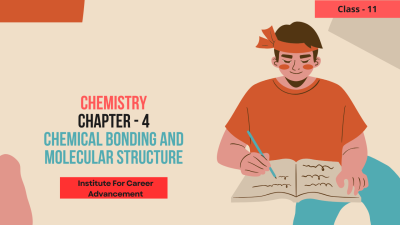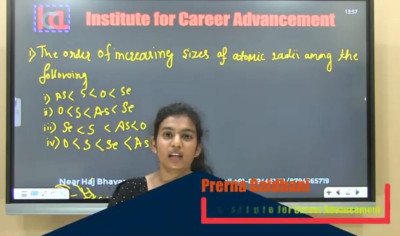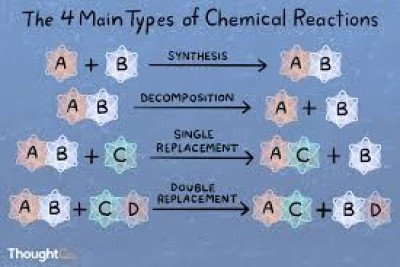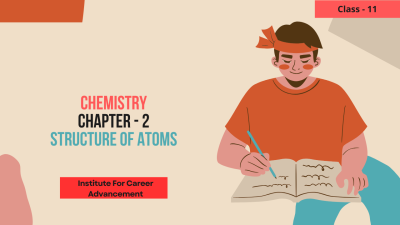Biomolecules - Class 11
In Class 11 chemistry, Biomolecules are the rockstars! They're the essential organic molecules that make life tick. This course gives you a sneak peek into their world: The Building Blocks of Life: Get ready to explore the four main biomolecules – carbohydrates, proteins, lipids, and nucleic acids. These molecules form the foundation of all living organisms and play crucial roles in various biological processes. Carbs: Sweet Energy Sources: Dive into the world of carbohydrates, the sugars and starches that provide energy for cells. You'll learn about different types of carbs, like simple sugars and complex carbohydrates, and their importance in cellular respiration. Proteins: The Versatile Workhorses: Proteins are the jack-of-all-trades in the cell! This course explores their diverse functions, from building tissues to speeding up reactions (enzymes). You'll learn about amino acids, the building blocks of proteins, and how their arrangement determines protein function. Lipids: Beyond Fats: Lipids are more than just fats! This course explores the different types of lipids, including fats, oils, and steroids. You'll learn about their roles in energy storage, cell membrane structure, and hormone production. Nucleic Acids: The Keepers of the Code: DNA and RNA, the superstars of genetics, are explored here. You'll understand how these nucleic acids store and transmit genetic information, the blueprint for life! একাদশ শ্রেণীর রসায়নে, জৈব অণুগুলি হল রকস্টার! এগুলি হল প্রয়োজনীয় জৈব অণু যা জীবনকে গতিশীল করে তোলে। এই কোর্সটি আপনাকে তাদের জগতের এক ঝলক দেয়ঃ জীবনের বিল্ডিং ব্লকঃ চারটি প্রধান জৈব অণু-কার্বোহাইড্রেট, প্রোটিন, লিপিড এবং নিউক্লিক অ্যাসিড অন্বেষণ করার জন্য প্রস্তুত হন। এই অণুগুলি সমস্ত জীবের ভিত্তি গঠন করে এবং বিভিন্ন জৈবিক প্রক্রিয়াতে গুরুত্বপূর্ণ ভূমিকা পালন করে। কার্বোহাইড্রেটঃ মিষ্টি শক্তির উৎস কার্বোহাইড্রেট, শর্করা এবং শ্বেতসারের জগতে ডুব দিন যা কোষের জন্য শক্তি সরবরাহ করে। আপনি বিভিন্ন ধরনের কার্বোহাইড্রেট সম্পর্কে শিখবেন, যেমন সাধারণ চিনি এবং জটিল কার্বোহাইড্রেট এবং কোষীয় শ্বাস-প্রশ্বাসে তাদের গুরুত্ব। প্রোটিনঃ বহুমুখী ওয়ার্কহর্সঃ প্রোটিন হল কোষের জ্যাক-অফ-অল-ট্রেডস! এই কোর্সটি টিস্যু তৈরি করা থেকে শুরু করে প্রতিক্রিয়াগুলিকে ত্বরান্বিত করা পর্যন্ত তাদের বিভিন্ন কার্যকারিতা অন্বেষণ করে। (enzymes). আপনি অ্যামিনো অ্যাসিড, প্রোটিনের বিল্ডিং ব্লক এবং কীভাবে তাদের বিন্যাস প্রোটিনের কার্যকারিতা নির্ধারণ করে সে সম্পর্কে শিখবেন। লিপিডঃ চর্বির বাইরেঃ লিপিড কেবল চর্বির চেয়েও বেশি কিছু! এই কোর্সটি চর্বি, তেল এবং স্টেরয়েড সহ বিভিন্ন ধরনের লিপিড অন্বেষণ করে। আপনি শক্তি সঞ্চয়, কোষের ঝিল্লির গঠন এবং হরমোন উৎপাদনে তাদের ভূমিকা সম্পর্কে জানতে পারবেন। নিউক্লিক অ্যাসিডঃ কোডের রক্ষকঃ জেনেটিক্সের সুপারস্টার ডিএনএ এবং আরএনএ এখানে অন্বেষণ করা হয়েছে। আপনি বুঝতে পারবেন কিভাবে এই নিউক্লিক অ্যাসিডগুলি জেনেটিক তথ্য সঞ্চয় করে এবং প্রেরণ করে, জীবনের নীলনকশা!
English
Last updated
Wed, 27-Nov-2024



















